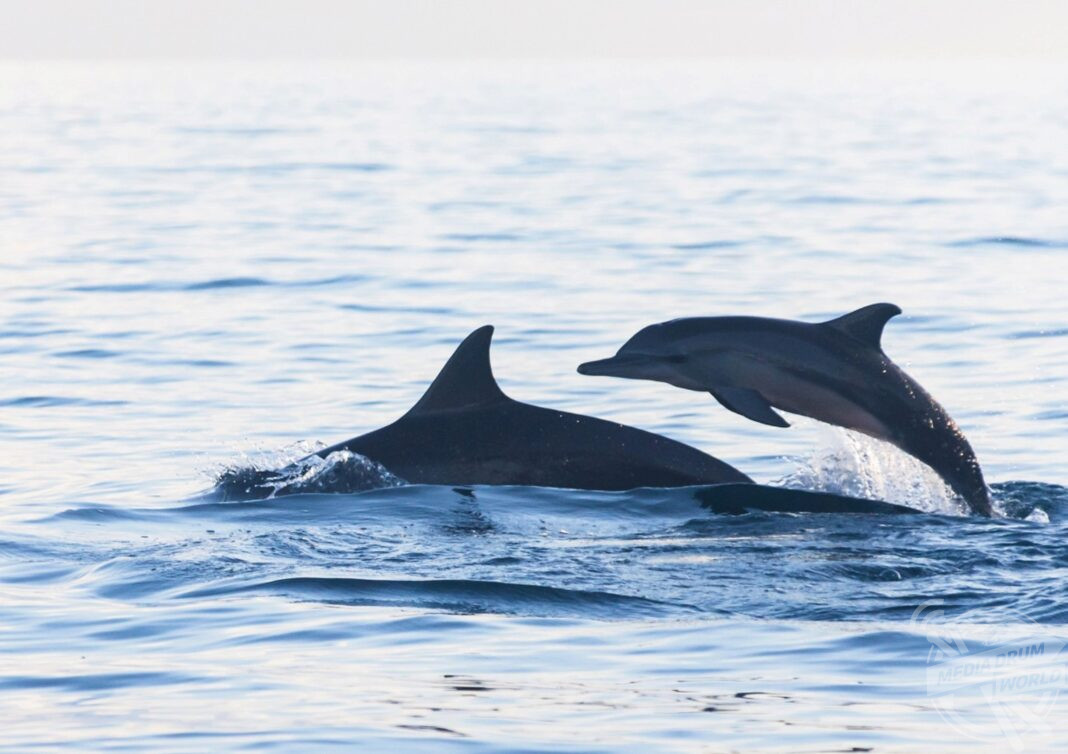Dolphin-watching is one of the most exciting family-friendly summer activities. Seeing them in their natural environment, as they glide along the sea’s surface and with some of them twirling and leaping up into the air, allows you to fully appreciate how wonderful these sea creatures are.
Seeing dolphins up close will surely put a smile on your face. But you’ll need to know a few things to ensure you don’t miss out on anything on your next dolphin-watching trip.
Dolphin Habitat
It’s an exciting experience to search for dolphins, and knowing their habitat will ensure your success in finding them. Dolphins are found in most oceans, seas, and certain rivers. Most species are found in temperate and tropical areas; however, they have also been found near the equator and subpolar regions.
Each species is unique in its distribution and habitat, but you’re more likely to find them in tropical, salty waters like the Indian, Pacific, and Atlantic oceans. You may also find them in fresh bodies of water at times.
Dolphin Behavior
Aside from understanding their habitat, understanding dolphin behavior will also help you spot them and find the best place to observe them. Dolphins are carnivorous mammals. They can hold onto their prey with their strong teeth, swallow it whole or cut it into smaller pieces. But they are extremely light-eaters. For instance, the bottlenose dolphin only consumes 5% of its body weight daily.
Many dolphin species migrate throughout the day to hunt for food. Some dolphin species can also eat larger fish and other sea mammals. Orcas, for example, are large enough to eat seals or other marine mammals.
Bottlenose dolphins work in groups to round up coral fish and other marine life. They also follow fishing boats because of the waste fishermen throw away. But the fascinating thing about dolphin behavior is their ability to use tools for hunting and playing.
Tips for Spotting Dolphins in the Ocean
Dolphins are a friendly and curious species. However, it can be difficult to locate them in certain seasons. These tips from a company that offers dolphin tours in John’s Pass will help ensure a successful trip.
Carefully choose your observation spot.
You can spot dolphins if you know the basics of their habitat. Knowing that dolphins prefer warm waters will help you choose the right season and beaches to visit.
Some areas offer better views, so you may need to climb hills or travel by boat for miles to get to these places. Choose your destination carefully to ensure that your trip is worthwhile.
Check the weather.
Monitoring the weather before you go out on any outdoor activity is essential. Rain could make it challenging to see dolphins and reduce visibility. A bright, sunny day is the best time to go dolphin-watching.
Invest a whole day.
First-time dolphin watchers need to be aware of one thing: dolphins don’t stay in the same area. It would be best if you waited for these playful cetaceans to arrive to ensure a 100% success rate. You will need to spend an entire day looking for dolphins; these cetaceans are active all day and can be seen moving around at night.
Always bring binoculars.
You won’t easily find dolphins jumping from the water or playing near you. Always keep your binoculars handy; they will allow you to see dolphins even when they are far away. Many dolphin-spotting binocular brands are on the market, and they come in different magnifications and scopes.
Be on the lookout for signs.
Dolphins are probably in the area if you notice signs like:
- feeding birds circling over a spot
- big splashes
- oily or still waters
- waves moving in the wrong direction
- bursts, blows, or any other unusual behavior
- breaking wave crests
Look out for splashes.
Scanning the horizon is the first thing you should do when looking for dolphins. Keep your eyes open, and scan from left to right. Look for something new, and check for any water disturbances.
Monitor your boat’s speed.
Keeping your boat at just the right speed is vital in dolphin-watching. Go too fast, and you’ll pass them by; stop, and they’ll leave you behind.
Keep the boat moving slowly. Dolphins might approach your boat and inspect it, and they may also chase your boat. Dolphins love to surf in the wake of boats and are known for jumping into their wakes. However, don’t swim with them, touch them, or chase after them with your boat. You also shouldn’t cross their paths.
The Big Idea
Dolphin watching is fun for a family activity, but you need to know a few things to ensure your success at finding dolphins. You must understand their habitat to know where to find them, and knowing their behaviors helps you know which season is the best time to see them.
You can ensure your success at spotting dolphins if you carefully choose your spot. You must also invest an entire day to find them but check the weather first. Always bring binoculars, so you can easily spot signs of their presence, like splashes or feeding birds circling over a spot. Lastly, keep your boat slow to let dolphins come a bit closer.









